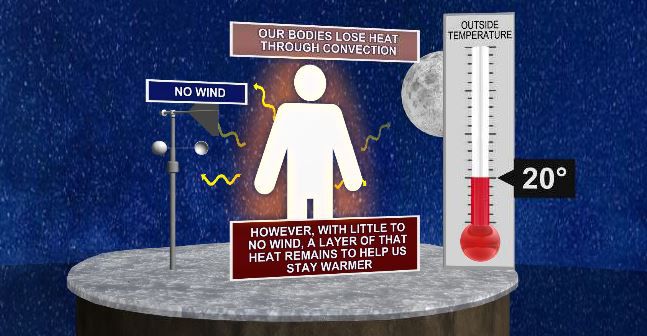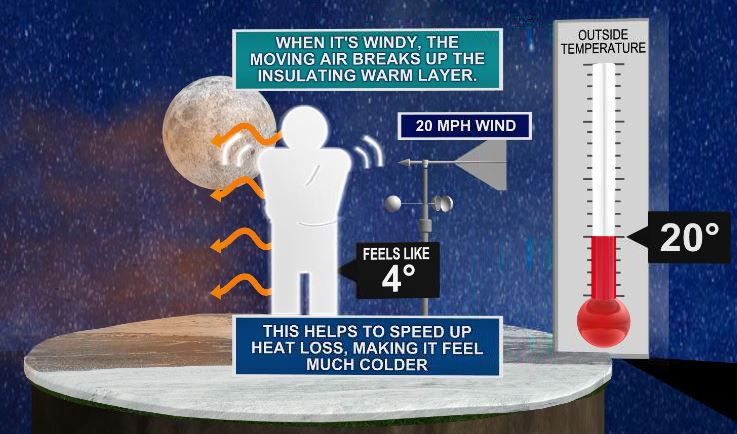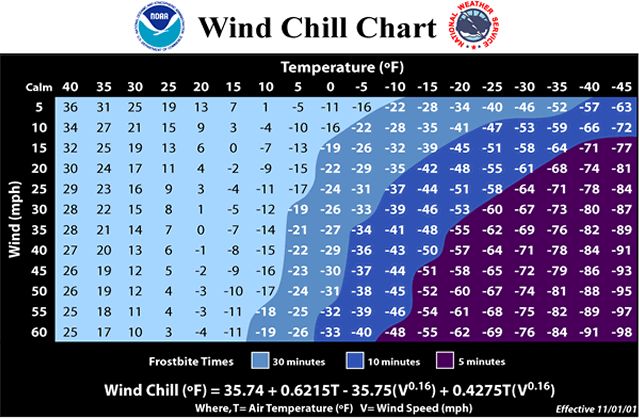Winter means cold, and winter plus wind equals colder! The term to describe the combination of wind and cold is "wind chill."
First, understand that our bodies lose heat through convection.
When we are outside and there is little to no wind, the air temperature is the same temperature we feel. There's little to no difference between the two.
In the example below, the outside temperature is 20 degrees, and it feels like it because a layer of that heat remains around our body to help us stay warm.

When it is windy, the moving air breaks up the insulating warm layer. This wind helps to speed up the heat loss and makes the body feel much colder outside.

Add in a 20 mile per hour wind to an outside temperature of 20 degrees, and it doesn’t feel like 20 degrees anymore. Instead, the wind chill is only 4 degrees!
The wind chill temperature is calculated based on the temperature and wind speed. Check the chart below to determine the wind chill and how long it takes to get frostbite.
At the top of the chart you’ll find the air temperature, and on the left is the wind speed. When you line up those two factors, where they meet is the wind chill.

Frostbite happens when body tissue freezes; your hands, feet, and nose usually freeze first. Your body protects your vital organs by cutting circulation to those extremities and focusing it on the most important places.
We've fought wearing jackets since we were kids, but one of the easiest ways to keep yourself safe from frostbite or hypothermia is by dressing appropriately. Wearing layers and cover all exposed skin (including fingers, toes, ears, nose and so on).
How you fuel your body can also help you stay safe. Stay hydrated because that increases your blood volume, which in turn helps prevent frostbite.
Avoid caffeine and alcohol. Caffeine constricts your blood vessels, which prevents the warming of your extremities. Alcohol reduces shivering, which is the body's attempt to keep you warm.
